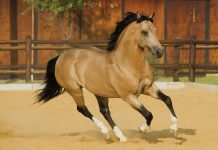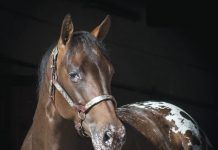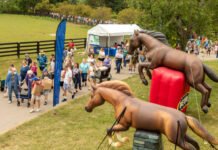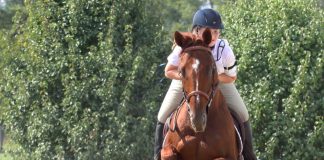 A horse that is supple and responsive to your aids is fun to ride. A horse needs to be able to bend properly through turns and around corners, circles and loops if you’re going to do activities such as dressage or jumping. A horse bends his whole body, not just his neck. The entire length of his spine makes an arc.
A horse that is supple and responsive to your aids is fun to ride. A horse needs to be able to bend properly through turns and around corners, circles and loops if you’re going to do activities such as dressage or jumping. A horse bends his whole body, not just his neck. The entire length of his spine makes an arc.
When a horse bends correctly, his hind legs follow in the track of his front legs. His head tips slightly in the direction that he’s going. He maintains the same rhythm and pace throughout the bend. He won’t drop his shoulder and fall to the inside, and he doesn’t become over-bent through his head and neck.
How well your horse bends is up to you. If you give him the correct aids, he’ll find it easier to bend correctly. If you’re sloppy, he’ll be stiff.
The Aids for Correct Bending
To ask your horse to bend to the inside, shift your weight to your inside seat bone. Keep your inside leg at the girth and use it to nudge him forward and to keep a good pace. If your horse falls inward, use your inside leg at the girth to push him out again.
Your outside leg should be slightly behind the girth to prevent his hindquarters from swinging out.
Use your inside rein to ask your horse to tip his head to the inside and bend his neck. Squeeze on the rein to encourage flexion and bend. If your horse is young or green, you may have to move your hand away from his neck (an opening rein) to “lead” him into the turn.
Keep your outside hand and rein close to your horse’s neck. Hold the rein softly, but firmly to help support your horse when he turns. You may have to give with this rein a bit to allow your horse to bend properly, but keep the contact so he can’t turn his head and neck too much and become over-bent.
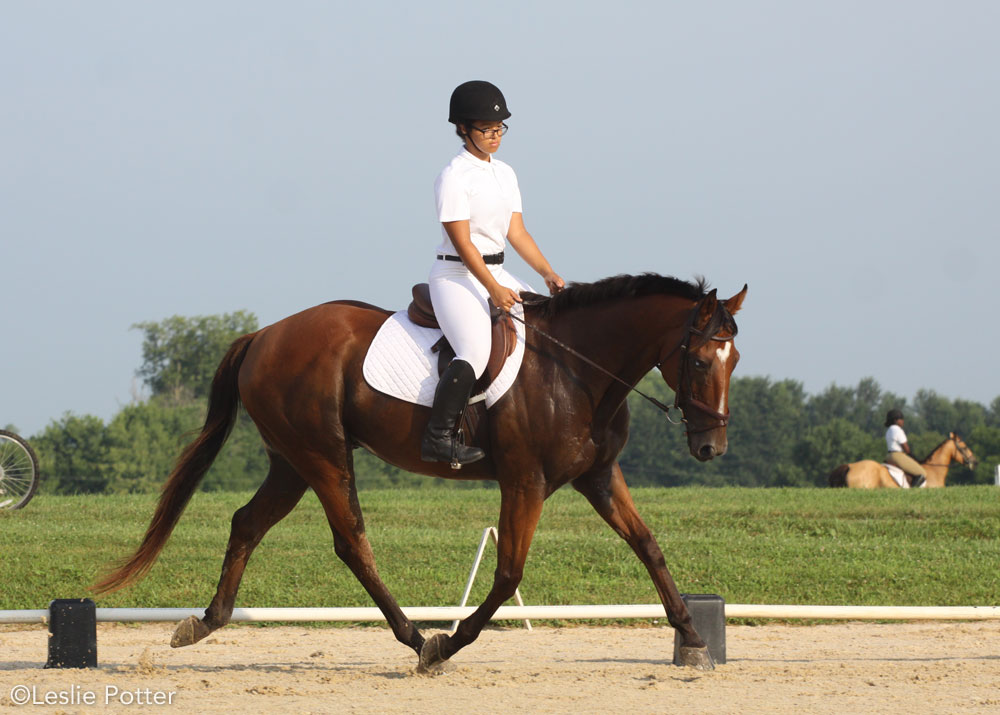
Exercises
It’s easy to school your horse properly when you have a trainer in the arena telling you what to do. It’s more difficult at home when you’re in the arena by yourself. Before you hop into the saddle, develop a schooling plan. Think about how you’re going to warm up your horse, and what schooling movements you’re going to do during your ride.
Now you know the correct aids to ask for a bend, here are some movements that you can do when you school to help your horse become suppler. Remember that most horses are stiffer on one side, so it’s important to do these exercises in both directions!
Circles
Start by doing 20-meter circles at the walk. If you can get a good bend at the walk, you’re more likely to get it at the trot and canter. As you begin the circle, your goal should be to keep the arc of your horse’s body the same as the arc of the circle. Think about keep the circle round—it’s easy to make it lumpy or egg-shaped!
Think about shifting your weight slightly to your inside seat bone. Your inside leg should be near the girth telling your horse to move forward and stopping him from falling inward. Your outside leg should rest behind the girth preventing him from swinging his hindquarters to the outside.
Use your inside rein to ask your horse to turn his head slightly inward and support him with a firm, but flexible outside rein. Don’t let the outside rein press on or cross over your horse’s neck when bending.
When you pick up the trot, make sure you are on the correct diagonal (rise when the outside leg is forward) to help keep your horse balanced. When you canter, check that your horse is on the correct lead (inside front leg reaches more forward). If you’re not on the correct lead, traveling in a circle will be uncomfortable for both you and your horse.
Half Circles
A half circle is a way to reverse your direction. When done properly it looks like a teardrop. Ride your horse on the long side of the arena. When you want to start the half circle, steer your horse toward the middle of the arena and make a loop back to the long side again. Then continue straight on. Try a half circle at the walk and trot.
Figure-Eights
A figure-eight is simply two circles with the letter X (the middle of the arena) as the center where the two circles meet. Your circles can be big or small, as long as both are the same size. Start with 20-meter circles. Use the correct bending aids as you set out in one direction (inside leg at girth, outside leg behind girth and so on) and ask your horse to bend around your inside leg. As you approach the place where the two circles meet, straighten out your horse for a stride or two by bringing your outside leg forward a bit and applying equal, but light, pressure with both legs. Then ask for the opposite bend as you head off in the new direction.
Bending Lines
Bending lines are an exercise many riders forget about. It’s fun and easy and you should try them. Ride along the short side of the arena and as you round the corner to the long side begin flexing your horse toward the middle of the arena (X) and make a single loop away from the outside fence. As you approach X, begin flexing your horse’s head and neck toward the long side again. When you get to the long side, bend your horse to the inside again so your horse will be prepared to go round the upcoming corner.
Serpentines
Serpentines are S-shaped figures in the arena. Begin on the short side of the arena by asking your horse to stay straight. As you near the long side, ask him to bend to the inside and make a loop that takes you back into the middle of the arena again. Straighten up your horse again for a few strides by bringing your hands back together over his neck and keeping equal pressure on the reins. Move both your legs so they are just touch the girth. Stay straight for a few strides, and then ask your horse to bend again as he nears the long side. You can fit as many loops as you like in the arena, but start with bigger ones at first (this should be about three loops), to make it easier for your horse to bend properly.

